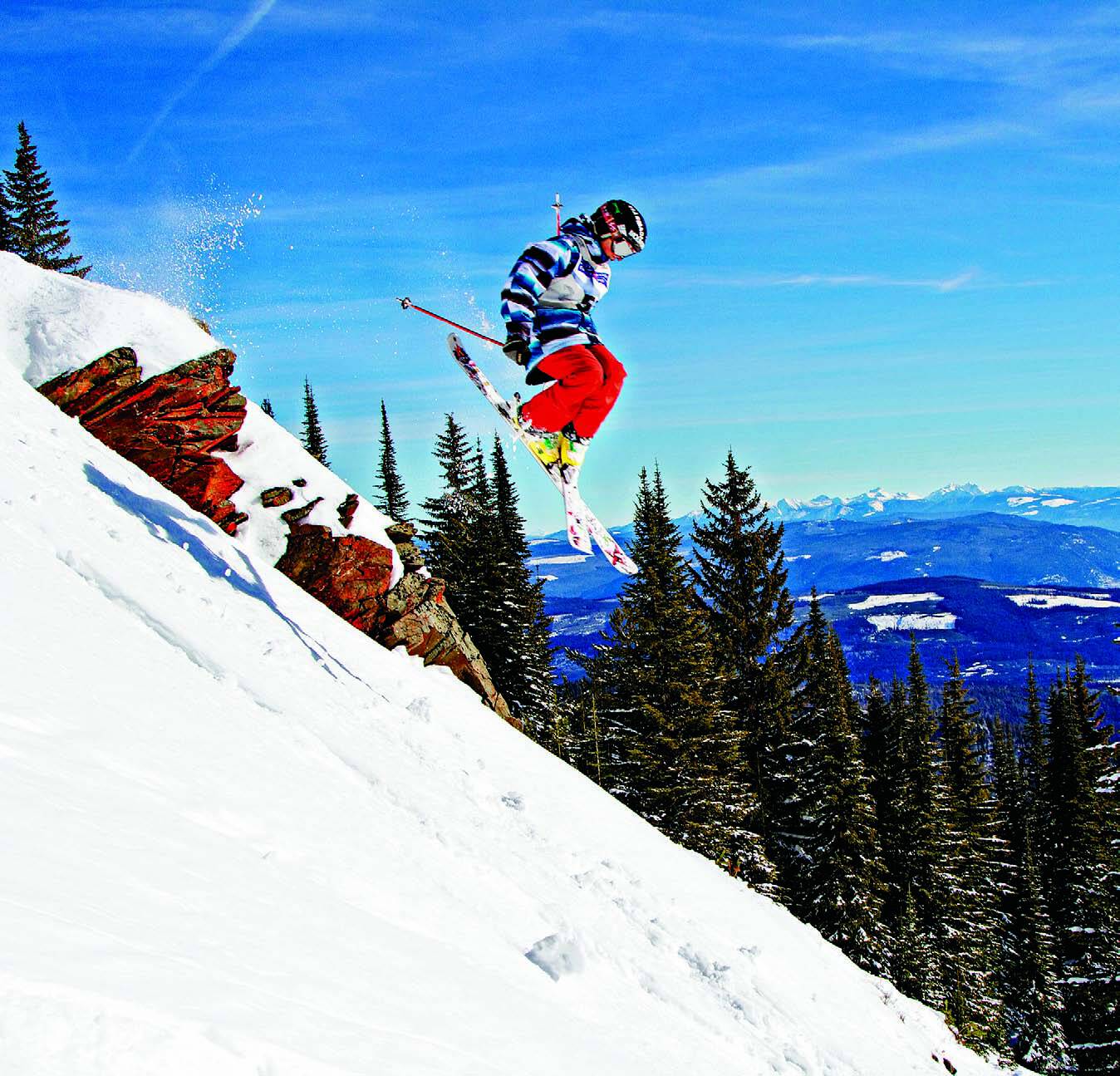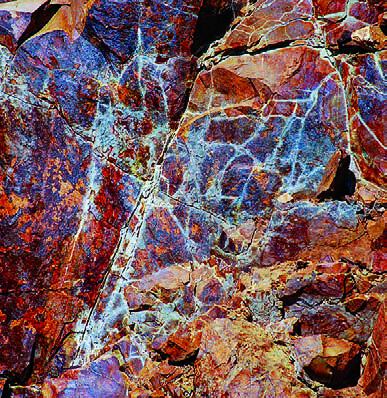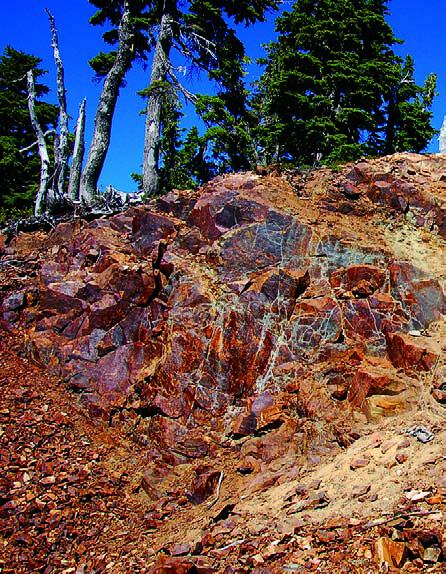
My first job as a geologist straight out of university in 1993 was near my hometown of Stewart, B.C., at an advanced gold project called Red Mountain. It was my dream job – in addition to being close to home and working in geology and underground exploration, I could also ski every day. I would travel with the miners on the back of a Sno-Cat, and ski back down to camp after work. I also helped with avalanche control, led by wellknown Swiss mountaineer Christoph Dietzfelbinger. Dropped off by helicopter to dig snow profiles along our proposed road route for avalanche baseline studies, we were often rewarded with a ski down 1,000 vertical metres of pristine powder!
I am blessed to live in a province that has some of the best skiing in the world. In the 1970s and ’80s, schoolmates from Stewart and I had learned to ski at Happy Valley, located next to the Granduc mine concentrator. The mining company installed a rope tow to take advantage of average winter snowpacks of more than 10 metres deep at the site, a one-time worldrecord-setting location for annual accumulation.

More recently, I was sitting in Long John’s Pub at Silver Star Mountain near Vernon with my young family enjoying some après-ski chicken strips. My eye wandered over the rustic decor of gold pans, picks and shovels, and old photos from a historic mining operation until it dawned on me: I was skiing over a series of old silver mines!
That’s when I truly realized the profound connection between British Columbia’s mining heritage and one of our favourite winter pastimes.
Immigrant trappers, prospectors and other pioneers, particularly from Scandinavia and central Europe, introduced and used skis to travel parts of the rugged frontier of British Columbia that had limited accessibility. Recreational ski clubs and the first resorts emerged and then grew in popularity after the Second World War. And how did these early ski enthusiasts access the pristine peaks? Often through the same access roads that miners had built to access their operations.

One example is the Mount Washington ski area on Vancouver Island. Starting in the 1940s, explorers identified copper, gold and silver mineralization on the mountain; in the mid-1960s, the Mount Washington Copper Company Ltd. produced almost 400,000 tons of ore from two open pits, with an average grade of 1.16 per cent Cu, 0.01 oz/ton Au, and 0.5 oz/ton Ag. As was often the case with small mines of that era, the site was abandoned but its environmental consequences remained. Starting in 2003, the Tsolum River Partnership (consisting of representatives from the community, the mining, forestry and fishery industries, and the federal and provincial governments, together with SRK Consulting) commenced a wonder- fully successful reclamation and water treatment plan to mitigate the effects. Many of my colleagues who ski and hike at Mount Washington continue to remark on the alteration and the mineralization that you can see on rocky outcroppings at the resort.
In my career as a geologist, I have worked on three different mineral properties in Alaska, B.C. and Yukon that were all named “Red Mountain.” In all cases, the rusty-red colour is due to the natural oxidation of iron sulphides, producing a rusty coat on the rock and talus exposures. Celebrating 111 years of skiing, Red Mountain Ski Resort in Rossland is no exception to this rule.
According to the resort’s website, in 1890, deposits of gold and copper were discovered on the south side of Red Mountain. This led to a major gold rush to the Kootenays, which in turn filled Rossland with miners, many of whom were ski-happy Scandinavians. These immigrants formed the Rossland Ski Club, which held the first recorded ski competition in Canada. The first downhill race was held on February 15, 1896, from the top of Red Mountain down the south side to the present location of the Rossland Historical Museum.
An early example of ingenuity and innovation in B.C.’s mining industry with lasting impact was the development of tramway systems for transporting ore.

The race was organized and won by Olaus Jeldness, a Norwegian mining engineer who was the leading early advocate for snow sports in Rossland. He also created and donated the elaborate Jeldness trophy for future winners of the race. The trophy is now on display in the Ski Wing of the Rossland Historical Museum. In subsequent years, the annual tournament was held in conjunction with the Rossland Winter Carnival, an event that attracted competitors and spectators from all over Western Canada and the United States.

In the 1930s, the first rope-tow was installed, with subsequent chair lifts and T-bars in the 1940s to ’70s providing greater access to the slopes. Today, Powder Magazine ranks Red Mountain Resort fourth in North America, and Skiing magazine calls it the most underrated!
An early example of ingenuity and innovation in B.C.’s mining industry with lasting impact was the development of tramway systems for transporting ore from mines in the Kootenays. Civil engineer Byron Riblet of nearby Spokane, Washington, was approached in 1896 to build an aerial tramway at the Noble Five mine in Sandon to move the ore from the top of Reco Mountain to the mill in the valley below. Over the next decade, Riblet built 30 aerial tramways for numerous mining operations in the region, before returning to Spokane to found the Riblet Tramway Company. He constructed mining tramways in Canada, Alaska, the western United States and South America. Riblet Tramway built its first chairlift for skiers in 1938 at Mount Hood, Oregon, and went on to become the largest supplier in the world, installing more than 400 systems (including Hollyburn Mountain’s in West Vancouver) as the sport gained popularity.

It’s not just in B.C. that ski resorts have a history rooted in mining; in the western United States, resorts such as Telluride (named after a whole species of gold- and silver-bearing minerals), the appropriately named Copper Mountain and Silver Mountain resorts, and many others all owe their access to early miners tunnelling under the future slopes.
Mining operations coexisting with ski resorts in British Columbia is still not out of the question in the future; Thompson Creek Metals’ high-grade molybdenum deposit sits deep underneath Hudson Bay Mountain in Smithers. A higher-grade zone of molybdenum is estimated to have measured and indicated mineral resources of 23 million tonnes grading 0.234 per cent Mo. The deposit is estimated to host 117 million pounds of contained molybdenum. Permitting and feasibility studies are currently on hold due to low metal prices.

It has been several decades since any new ski resort has been built in British Columbia; as with the mining industry, the permitting process and environmental considerations are extensive and daunting. But perhaps one day, future generations of skiers will take advantage of the massive winter snowfalls on the rugged mountains of northwestern British Columbia, where today’s new mines are proposed. “Galore Creek” and “Valley of the Kings” would also make wonderful names for ski resorts. And who knows, maybe even my old downhill slopes at the “other” Red Mountain near Stewart may see some young future miners who love to ski.

